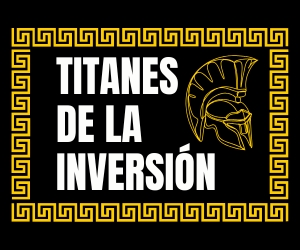Explore the success story of Chase Coleman, his investment strategy, and how he has shaped Tiger Global Management. Your guide to understanding one of the titans of Wall Street.
Home
»
Investments
»
WHAT IS REVENUE-BASED CROWDFUNDING
Learn the advantages of revenue-based crowdfunding in trading, from its definition to successful examples and specialized platforms.

Definition and Characteristics
Have you ever dreamed of being a big fish in the market without leaving the comfort of your couch? Revenue-based crowdfunding could be your golden ticket, so grab that strong cup of coffee and pay attention.
Revenue-based crowdfunding is a variant of crowdfunding that allows investors to receive a portion of the future revenue of the funded company, instead of shares or fixed rewards. It's like the financial equivalent of betting on the next rock star before they reach stardom.
This modality is characterized by several aspects:
Payment flexibility: Payments to investors are adjusted according to actual revenue, meaning a company doesn't have to pay more than it can afford.
Greater access to capital: Small businesses and startups can access investors without needing a long credit history.
Shared risk: Investors take on part of the business risk, better aligning their interests with those of the entrepreneurs.
Imagine an investor in your small bakery startup, just before you sell the cake that will win "The Great Baker" of the year. Instead of taking out a traditional bank loan, where you'd have to sell a kidney before you can pay off the debt, investors earn only when you earn.
A good example could be Cupcake Mia, whose popularity skyrocketed by participating in a revenue-based crowdfunding platform. Investors not only had skin in the game, but also Mia's sweat and cake-flavored tears.
Now, some financial markets still view this modality like that weird cousin who sometimes shows up at Christmas, but the reality is that it is gaining traction, especially in tech and consumer sectors.
Revenue-based crowdfunding can be that Swiss army knife for entrepreneurs seeking flexibility without the yoke of a traditional bank on their shoulders.
Successful Examples
If you're still not convinced that revenue-based crowdfunding can take you to the top, let's take a look at a couple of success stories that even bring tears of joy to Wall Street wolves.
One of the most notorious examples is PopSockets, which managed to launch their iconic smartphone accessory by projecting future revenues on their crowdfunding platform. Does it sound bold and risky? Of course, but who would have thought that a phone stand would fit into almost every pocket in the world?
Another impressive case was Tonal, the fitness company that decided lifting weights used to be too boring to be profitable. They utilized a revenue-based crowdfunding platform to test their product in the market and listen to their customers from day one. Their subsequent success left competitors doing push-ups not just to stay fit, but to update their business approaches.
However, the road to success isn't always paved with gold. Some companies haven't met their expected goals by underestimating marketing and revenue projections. This is a friendly reminder that you still need to do your homework before embarking on this avenue.
What becomes evident is that those companies choosing this path do so with funds that not only facilitate expansion, but also create a stronger bond with investors who could almost be called sponsors. Because who doesn't want a fan club before putting on the show?
Clearly, revenue-based crowdfunding is not just an innovation in fundraising, but offers an attractive alternative for those tired of more traditional forms of financing. It's the evolution we've been waiting for, isn't it?
Specialized Platforms
Well, you know the theory, and the success stories are keeping you up at night. But where do you go to embark on this revenue-based crowdfunding adventure? This is where specialized platforms come into play and can become your new financial best friend.
Platforms like Fulcrum and Liberis offer specific services for those looking to fund their projects through this model. While Fulcrum has a stronger focus on tech companies and startups, Liberis has opened its doors to a wide range of industries.
Although each platform has its unique touch, they all share a crucial purpose: providing fertile ground where ideas become tangible realities. And of course, it's not just about casting the line and waiting for the fish to bite; these platforms also offer advice to optimize your pitch to potential investors.
Transparency is essential in this ecosystem, and most platforms strive to provide all the information an investor might want: from revenue projections to reports on the use of funding. Here, going in blind is not allowed; after all, nobody wants to play Russian roulette with their investments, right?
To avoid being caught like a deer in headlights, research the rates, conditions, and backgrounds of the platforms that catch your eye. The market doesn't forgive the naive but rewards the informed.
In the words of legendary investor Warren Buffet, "Risk comes from not knowing what you're doing." So prepare to learn, compare your options, and who knows, maybe you'll find the next PopSockets along the way.
YOU MAY ALSO BE INTERESTED








